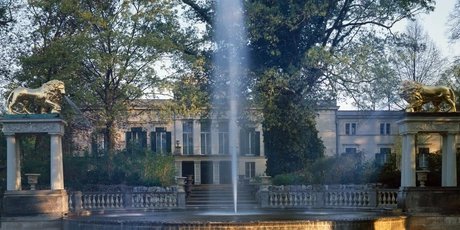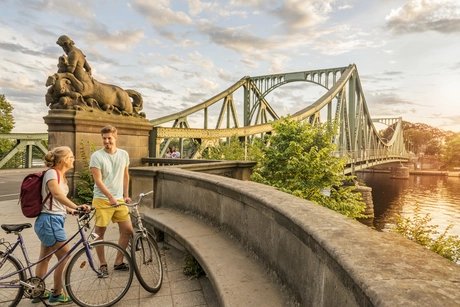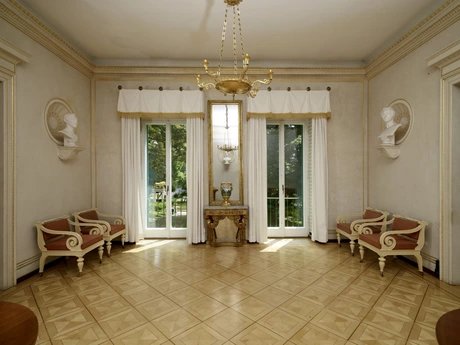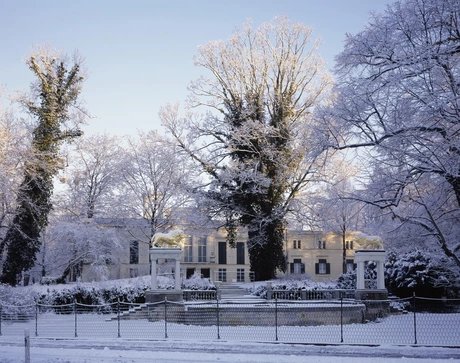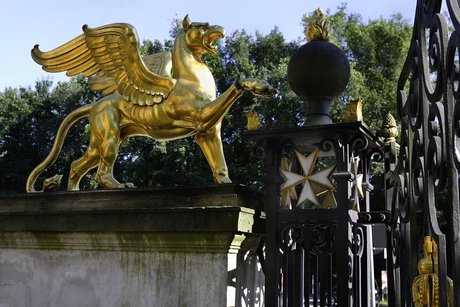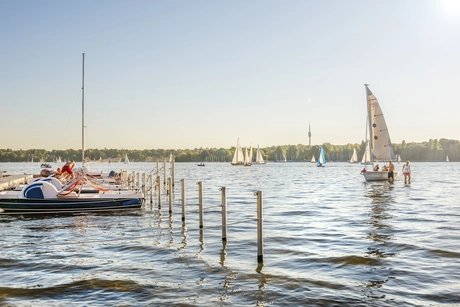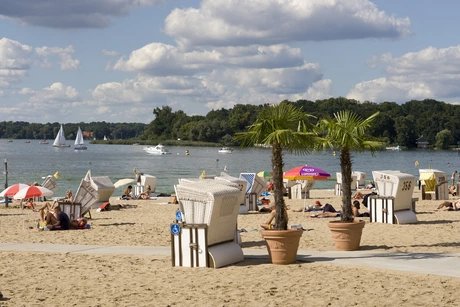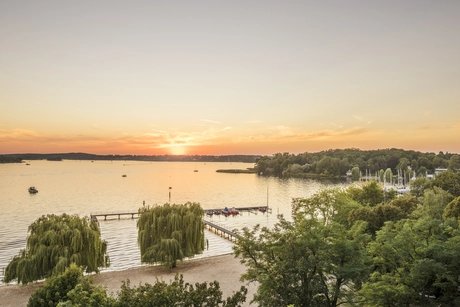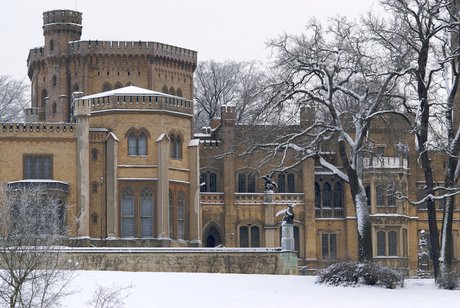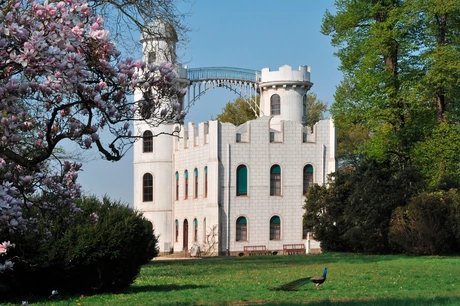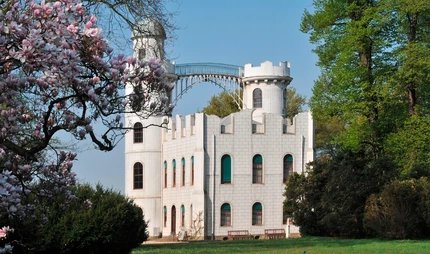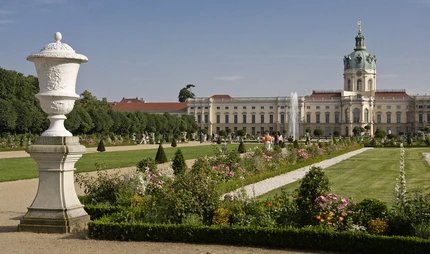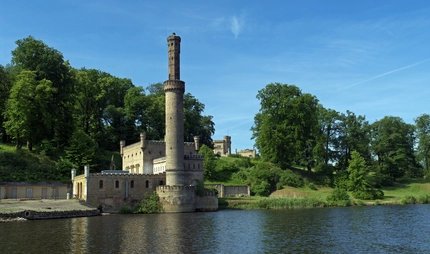
Glienicke Villa and Casino
A touch of Italy on the River Havel
The neo-classical palace of the Glienicke Villa has a Mediterranean flair – a dream of Italy on the banks of the River Havel in Berlin.
The neo-classical palace of the Glienicke Villa has a Mediterranean flair – a dream of Italy on the banks of the River Havel in Berlin.
The charming palace of the Glienicke Villa is set like an Italian country villa on the banks of the River Havel, evoking a Mediterranean lifestyle. Strolling through the beautiful park and grounds, looking out over the water and the magical landscape of palaces, it seems hardly credible this is not an Italian arcadia, but the outskirts of a very vibrant Berlin!
From Berlin to Potsdam via Italy
In 1823, Prince Carl of Prussia, a younger son of the Prussian king, returned home from his travels in Italy. Thrilled by the beauty of the classical world, his greatest wish was to have a Roman-style country house built on the sandy soil of the March of Brandenburg. The perfect site was soon found – the Glienicke estate on the banks of the River Havel. And with the support of Karl Friedrich Schinkel, probably Berlin's best known nineteenth-century architect, the Prince’s dream of a little piece of Italy between Berlin and Potsdam could become a reality.
Schinkel converted the Glienicke manor house into a neo-classical country house, and also designed the auxiliary buildings in a classicist style. Prince Carl of Prussia was a keen collector of beautiful objects, decorating his rooms with his large collection of antiquities. But when the Prince died in 1883, aged 81, his family were not interested in his dream of classical Italy. The valuable collection was scattered and the palace left to decay. After the Second World War, the old palace, now located in East Germany, was used as a sports hotel and adult education centre. Since 1995, Glienicke Palace has been restored and refurbished under the Prussian Palaces and Gardens Foundation Berlin-Brandenburg.
The Glienicke Villa and its grounds also belong to the UNESCO World Heritage Site inscribed as the Palaces and Parks of Potsdam and Berlin.
The palace interior
The salons and rooms in the palace are decorated in strong colours, in red, dark blue and green, creating an impressive setting for the furniture and exhibits on show. The Red Salon, the main festive reception room stretching along the front façade, is the heart of this summer palace.
The Court Gardeners’ Museum
The Court Gardeners’ Museum in Glienicke Park is the first European museum dedicated to the art of court gardeners and focuses, in particular, on the work of the Prussian court gardeners. The exhibition presents documents and objects illustrating the spectrum of horticultural work from botanical drawing and surveying to floriculture.
The park and grounds
In planning his summer palace, the Prince envisioned a unity of architecture and nature, harmoniously reflected in the buildings and grounds. To achieve this goal, Peter Joseph Lenné, Prussia’s leading landscape gardener, worked closely with Schinkel to design the park and gardens. As a result, the pleasure ground, the English-style area of grounds near the house, seems completely natural, even though it is landscaped.
The influence of neo-classical architecture is also evident throughout the park. A vine-covered pergola decorated with antique marble fragments leads to the summer palace, while one of the main ornamental features is the Lion Fountain, flanked by golden lions set on columns. In the grounds, the Casino, named after the Italian for small house, similarly has pergolas and follows an antique model. Even the little belvedere, a tea house where the Prince could observe the comings and goings on the road to Potsdam, was built in the same style. When a round pavilion nearby was added to allow the Prince to watch life on the river, the tea house and pavilion were nicknamed the Kleine and the Große Neugierde – literally, the “little curiosity” and the “large curiosity”.
Glienicke Bridge, which crosses the river directly behind the palace linking Berlin and Potsdam, can also be seen from here.
Restaurant Remise Glienicke
The original “Remise” was the carriage house. Now converted into a restaurant, it offers both delicious snacks and a more ambitious menu. Thanks to its romantic location, the Remise Restaurant is also much sought-after for wedding receptions.
GartenForum Glienicke
The GartenForum Glienicke regularly hosts events at Glienicke Palace on landscaping and the history and conservation of gardens and parks.
Prussia’s Arcadia
From Glienicker Park you can look out across the Havel to Potsdam. Don’t forget to visit Glienicker Brücke, which connects Berlin and Potsdam. During the Cold War, the border between East and West Germany ran right through here, and the bridge was a meeting point for swapping spies. In those days, the Klein-Glienicker Kapelle lay dilapidated in no-man’s land. Now, the chapel is a shining Neo-Gothic jewel, following extensive restoration. Today the palaces and parks of Berlin and Potsdam are reunited. On the Potsdam side, the romantic Schloss Babelsberg stands on a hill. From the park you can enjoy a wonderful view of the gardens and lakes known as “Prussia’s Arcadia”.
Find out more about the city’s neighbourhoods with our Going Local Berlin app.
Opening Hours
Aperto stagionalmente
